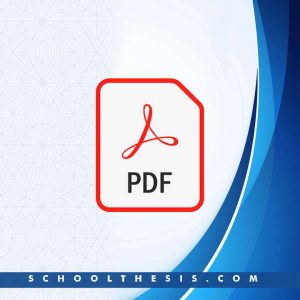Comparative Studies of Methods of Processing Pathogen-free Poultry Manure

Comparative Studies of Methods of Processing Pathogen-free Poultry Manure
Abstract of Comparative Studies of Methods of Processing Pathogen-free Poultry Manure
This project was aimed at finding out the different microorganism that are associated with the method of processing pathogen free poultry manure, identifying various contaminants that are associated with poultry manure. It is also aimed at comparing the different method of processing pathogen free poultry manure to find out the different contaminants that are associated with the poultry manure; and the different methods used was Boiled, Sundried, Roasted, Oven dried and Raw poultry manure. The contaminate found from the different methods were Escherichia coli, spore of fungi, staphylococcus and streptococcus pyogenes. And out of the five methods, Roasted and Oven dried poultry manure had no contaminate. The result of the study shows that there was no significant different (p>0.05) in the entire poultry manure sample in bacteria count.
Chapter One of Comparative Studies of Methods of Processing Pathogen-free Poultry Manure
INTRODUCTION
Poultry population is rising every year leaving large amount of poultry refuse. The poultry population in India is 489 million and the manure availability is estimated to be 12.1 million tones (Livestock Census, 2003), while in Nigeria, about 935.5 metric tones of manure is produced annually. The poultry population is not spread throughout, but is concentrated in some pockets only. Normally, the manure is stored in most of the farms before disposal, at least for a period of one month and this leads to loss of nearly 40% nitrogen (N) which reduces the value of the manure.
Fish raised in semi-intensive, fresh water system provides the major proportion of farmed, global production (FAO, 1995). A high proportion of this aquaculture occurs in rapidly developing Asian countries, which are also experiencing sharply increased consumption of poultry semi-intensive system are usually based on ponds fertilized with livestock manure and fed with low cost supplementary feeds.
There are different types of poultry manure such as deep letter manure, broiler manure, cage manure and high rise manure. Nutrient values of poultry manure vary considerable depending upon the conditions. Under which it is processed. The ration of litter to manure and the moisture content causes considerable variation among manures from different house. Poultry manure contains about 3-5% nitrogen, 1.5-3.5% phosphorus and 1.5-3.0% potassium and macro nutrient at consideration amount.
Poultry are more nutrient dense than other livestock wastes. Typically they contains less moisture, fiber and compounds such as tannins that discolor water when used widely in both fresh and brackish water aquaculture.
The import of poultry wastes in aquaculture is relatively recent. In areas of traditional fish culture , ruminant and pig manure have predominated as pond fertilizer in the India subcontinent and China respectively. Poultry manure was not used to any extent probably because small flock size and extensive management precluded collection. A range of poultry by product are produced and re used in livestock feeds including feather meal, blood meal, poultry letter meal etc. (Muller, 1980) and poultry wastes are used as feedstuffs for fish and also as soil conditioner.
JUSTIFICATION OF THE STUDY
Nutrient value of poultry manure varies considerably depending upon the conditions under which it is processed. Therefore, they study hopes to highlight the characteristics of poultry manure chemical deposition, and methods of processing pathogens. Free poultry manure for use in aquaculture practice.
Aims and Objectives
1. To know the methods of processing in the usage of poultry manure.
2. To know the problems in the usage of poultry manure in aquaculture.
3. To recommend the best method of preparing pathogen-free poultry manure that is free or devoid of micro-organism in fish culture.
